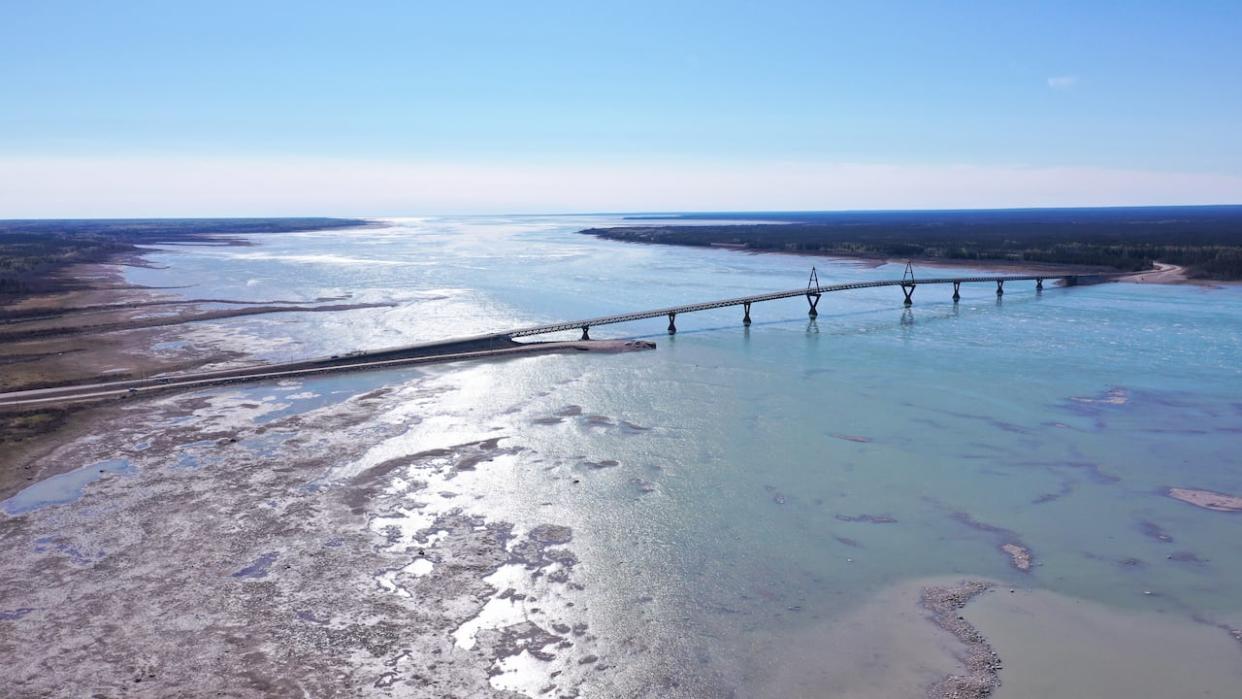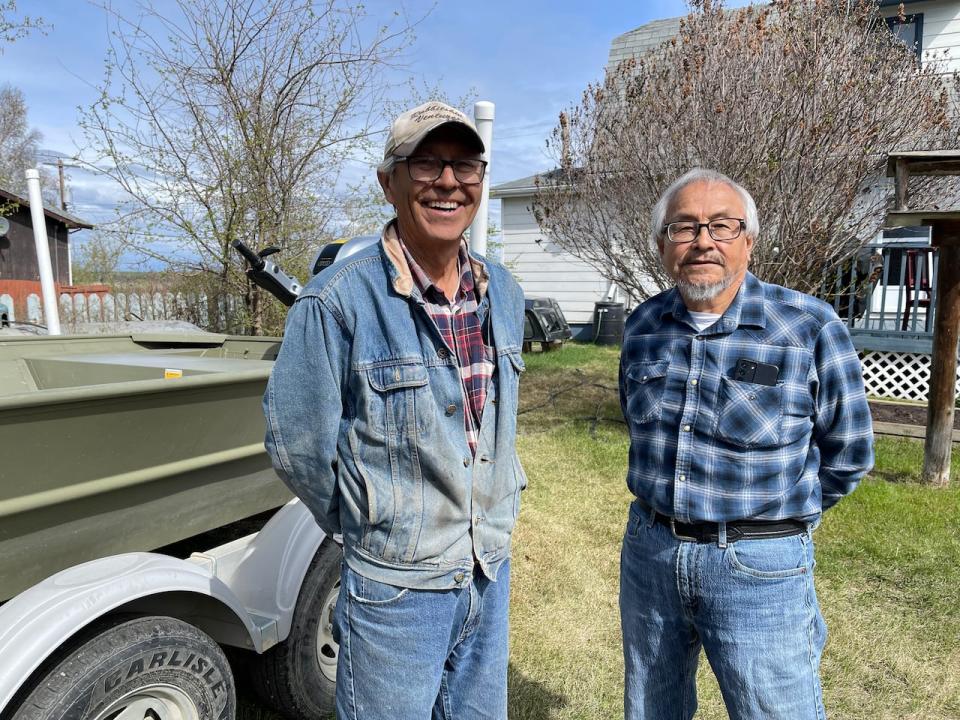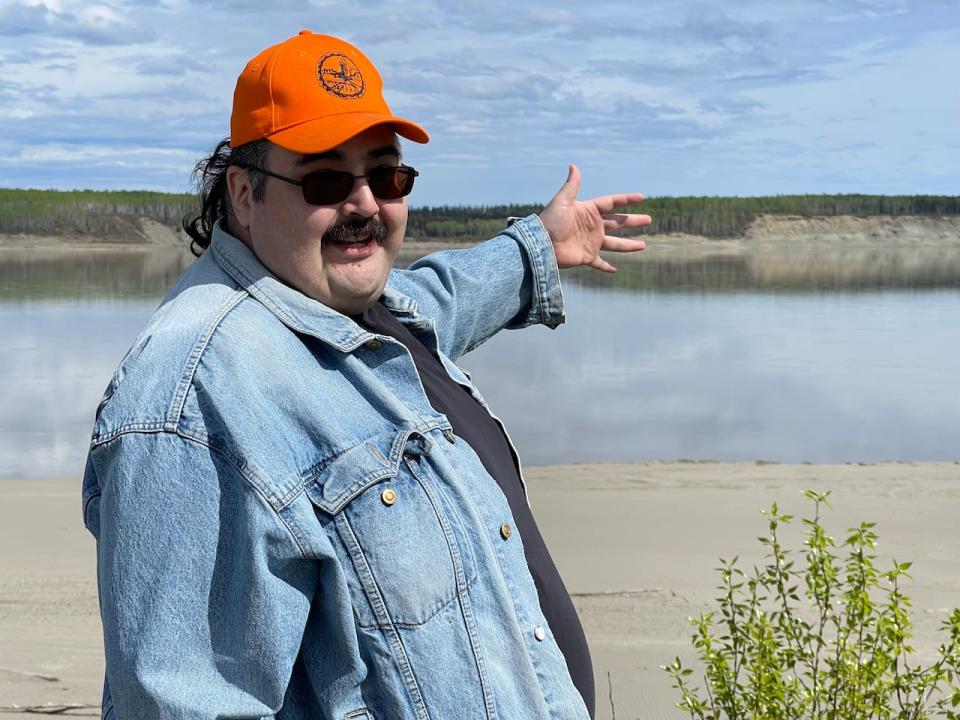South Slave, Dehcho residents voice concerns about low water in N.W.T.

- Oops!Something went wrong.Please try again later.
A view from the top of the Deh Cho bridge in Fort Providence, N.W.T., shows sandbars and rock formations protruding from the once-mighty Mackenzie River.
The retired Merv Hardie ferry — once a lifeline to Yellowknife, before the bridge was built — sits parked in the distance. Residents in nearby Fort Providence have questioned whether the ferry could even operate in the current conditions.
This is the second year of extreme low water in many parts of the N.W.T., including on the Mackenzie River.
Down the Mackenzie from Fort Providence, in Fort Simpson, N.W.T., it's the same story.
Bob Norwegian and his brother Wilbert Antoine currently live in Fort Simpson, and grew up in the Dehcho. Norwegian says his memories of the Liard and Mackenzie Rivers date to the late 1950s.
"If you added another ten feet [of water], that's what we used to consider low," he said, "There's boaters all over the place that are really concerned about traveling the waters."
Fort Simpson is accessed by the M.V. Lafferty ferry in summer months. The ferry crossing on the Liard River opened for the season earlier this month, and the town's mayor has expressed concern about the vessel's ability to operate in the low water.
Antoine said he has seen rocks protruding four to five feet out of the water. He says the territorial government should be consulting elders, or others with long-time experience, to find long-term solutions.
"We're really hoping people listen to people like Bob and I when we talk about the need for a bridge," Antoine said.

Bob Norwegian, left, and his brother Wilbert Antoine say the water levels in Fort Simpson are the lowest they've ever seen. (Robert Holden / CBC)
Antoine feels the building of a bridge would be a much smaller undertaking compared to the Deh Cho Bridge. The crossing connecting Fort Simpson with the highway system is less than a kilometre long.
"I don't think it would cost much, unlike the Mackenzie River bridge which cost into the hundreds of millions of dollars," he said.
Fort Simpson mayor Sean Whelly also expressed his support for a bridge earlier this month. He worries that if the ferry can't reliably operate, his community could be isolated in the summer months.
Drought conditions since 2022
N.W.T. government hydrologist Ryan Connon told CBC news earlier this week that low precipitation is a significant factor in fluctuating river levels over the summer months. The territory has been experiencing drought conditions that began in 2022, he said.
Dieter Cazon, manager of lands and resources for the Łı́ı́dlı̨ı̨ Kų́ę́ First Nation in Fort Simpson, recalls a time in the late 1980s when the town had 27 days of non-stop showers.
"That's a fair difference from now," he said, "I think last year we had two days that I can remember of solid rain."

Dieter Cazon says the Łı́ı́dlı̨ı̨ Kų́ę́ First Nation will be studying the water and sediment content of the Mackenzie and Liard Rivers in the coming months. (Robert Holden / CBC)
Cazon is a member of the Guardians program, which facilitates the gathering of information on the changing dynamics of the water cycle on the river.
While transportation issues with the ferry are a valid concern, Cazon says there are other problems the First Nation is thinking about.
"One thing we're concerned about is the concentration of dissolved solids, or anything in the water, pollutants or not," he said.
Cazon says when water levels drop, these concentrations can rise due to lack of dilution.
"We're working with fish biologists and other groups to gather that information and see what the health of the animals are," he said.
Cazon says there's also concern over silt and sediment build-up at the site of the village's fresh-water intake pipe.
Connon says that despite the prolonged drought — and other potentially aggravating factors such as the filling of B.C.'s Site C dam — the situation isn't necessarily permanent.
"We'll get more precipitation eventually. We will get our wet periods," he said.
"But unfortunately, I can't tell you whether that's going to be this summer or next summer — or five summers from now."

